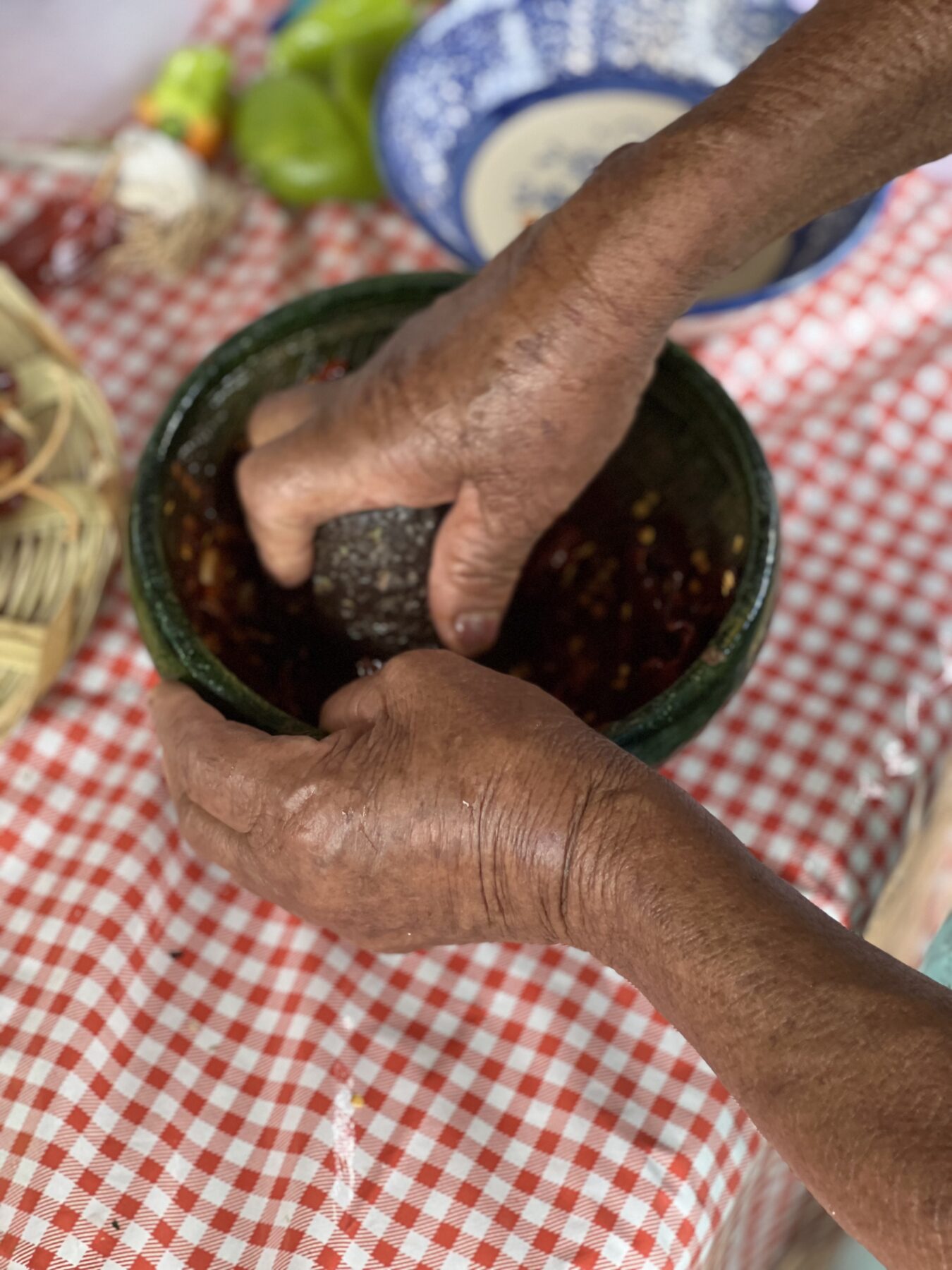Research
El Chile Tabiche
Anecdote of a Chili Once Thought Lost

One afternoon in June 2021, Doña Ernestina Santiago shared with us and her family memories from her childhood and her journey in acquiring the vast culinary knowledge of her community; Santo Domingo Tomaltepec. Among the stories, Doña Ernestina recalled a type of chili called guintabich, which her mother used to cook with beans and had a very special flavor — but it had stopped being consumed in the community approximately 40–50 years ago. What chili is the guintabich? Does it still exist? Why did people stop using, growing, cooking, and eating it?
Doña Inés Ramírez, another cook from the community, told us that although it was no longer used in the region, it was still possible to find guintabich at the Central de Abastos, but only in dried form and at very high prices. She also mentioned that she remembered hearing it was cultivated in the Sierra Sur of Oaxaca. And so, Doña Inés proposed we go investigate the whereabouts of this chili at the Central de Abastos. There, the chili vendors confirmed that this chili was still being produced, although in decreasing quantities, in the towns of Ejutla de Crespo y en Miahuatlán en la Sierra Sur.
Eventually, when one of the members of Cocina Colaboratorio went to visit a relative in Ejutla de Crespo, the great mystery of the guintabich was solved — she was immediately told, “it’s definitely the chile tabiche.” And indeed, on market Thursdays in Ejutla de Crespo, guintabich could be found in various sizes, both dried and fresh. We took photos of the chilies and sent them to Ernesrina’s family, who quickly confirmed that, indeed, chile tabiche was guintabich.

The rediscovery of tabiche not only brought the joy of reconnecting with a lost flavor, but also the opportunity to restore its place in the culture and culinary imagination of Santo Domingo Tomaltepec. From the collective, we organized a gathering to remember, plant, cook, and share around the guintabich, using the seeds and fruits shared with us by the chile tabiche vendors of Ejutla de Crespo. In this space, traditional salsa recipes once made with this chile were prepared, and new ones were also created—mainly by the younger generations of the community.
Through dialogue and collaboration across diverse voices, this research not only revived the memory and tradition of chile tabiche but also sparked reflections on heritage, care, and challenges such as climate change and the standardization of food systems. It also reminded us that weaving networks of use, conservation, and care is no simple task. Today, we continue working to regain the tacit knowledge that was lost in order to grow this variety of chile once again—something that takes time, willingness, resources, and several attempts. At the end of the day, it is these actions and connections that have historically allowed the domestication of many foods, and in turn, the variety of flavors we so deeply enjoy.
COLLABORATORS
Daniela Sclavo
Lucía Pérez Volkow
Emilio Hernández Martínez
Inés Ramírez Martínez
Visit also:
Cocina Colaboratorio is a transdisciplinary collective that brings together communities of people dedicated to agriculture, cooking, art, design, architecture, and research around the kitchen table to exchange knowledge, design, and implement actions for a sustainable food future. It is a laboratory of collective creation and joint experimentation that seeks to reconcile the care of nature with food production and diverse ways of life.
In this section, you will find stories of actions in three territories through three arenas: the Kitchen, the Experimental Plot, and the Living Biocultural Archive. We also share research-action projects, public programs, and exchanges through Extended Table, as well as stories about resources for other collectives.